You may have heard the term “cross-functional” team used in discussing software development. This refers to a team on which members have different skill sets, which they each leverage toward a common goal: in this case, the development of a custom software application. Experience has shown that this is the best team-building approach, in terms of the ability both to adjust quickly and to optimize the development process and cost savings.
Cross-Functional Team Roles
What roles does a cross-functional team consist of? The idea of a cross-functional team originates in the context of the Scrum framework, so let’s break it down using the example of a standard Scrum team:
Product Owner. This role is responsible for the overall product, including generating requirements, working with road map and task backlog, planning releases, analyzing feedback, and communicating with stakeholders.
Scrum Master. This role helps the team and the Product Owner develop the agile culture within the team, makes sure Scrum principle is followed, facilitates activities, helps in conflict resolution, and tackles obstacles.
Development Team. The development team is responsible for actually building the product. This team is cross-functional, itself, and includes back-end, front-end, mobile dev, UX/UI, Quality Assurance , Business analyst, and other specialists.
In a cross-functional development team, we do not see a formal division of responsibility hierarchy — everyone is an equal participant and bears responsibility for both successes and failures.
Advantages of the Cross-Functional Approach
So, what are the advantages of cross-functional teams over classical ones?
Proof of concept. Having team members who can of carry out various stages of analysis, design, development, testing, and feature — or even a whole increment release — within a short period of time (e.g., over a single Scrum sprint), means the team is able to test any hypothesis quickly.
Frequent product release. A well-balanced composition allows to team to complete the abovementioned stages of work on the product efficiently, meeting milestones and producing releases frequently.
Openness. The need for constant communication within the team facilitates openness and, significantly speeds up the process. The Scrum master or manager on a cross-functional team is responsible for developing a culture of cooperation and transparency, actively facilitating team meetings and helping team members overcome any hesitation.
Member equality. By being a part of a team and by taking part in team activities, especially retrospectives and sprint planning in Scrum, we develop a culture where each member of the team has a voice and has the right to be heard. It goes without saying that while discussing issues on architecture, the opinion of a senior developer and a junior developer will not have equal weight; however, the fact that a Junior developer has an opportunity to express themselves and be heard has a positive impact on the effectiveness of the team and the team chemistry.
How to Get the Most Out of Your Cross-Functional Team
If you are the person at the wheel, here are some great tips to keep your team happy and productive.
Remember the main rule: You are a colleague first and a leader second. If you follow this principle, the team will stick with you through thick and thin. If the team members only see a boss in you, brace for problems.
Make sure to create a project roadmap and outline respective responsibilities for the team members at the first meeting.
Do not be late. If you are, apologize publicly. This will show that you respect the time of your colleagues.
Learn to appreciate and thank your colleagues for even insignificant things. It always feels good to be appreciated, however small the accomplishment. A mere “thank you” can go a long way as a powerful motivator.
Motivate. Do this by celebrating little victories — this is one of great positive reinforcement moves a team leader can make. After reaching a milestone, arrange some sort of a celebration. To start with, you can write a group letter recognizing the achievements. This may be followed by ordering food for everybody, arranging a team outing, or purchasing cinema tickets or gift cards.
Fight the obscurity. To maintain transparency, follow the process of the work in progress, and make sure to tell the other departments or teams about the project. The unknown brings unease, so remember to give other colleagues in the company a glimpse into what your team is working on.


